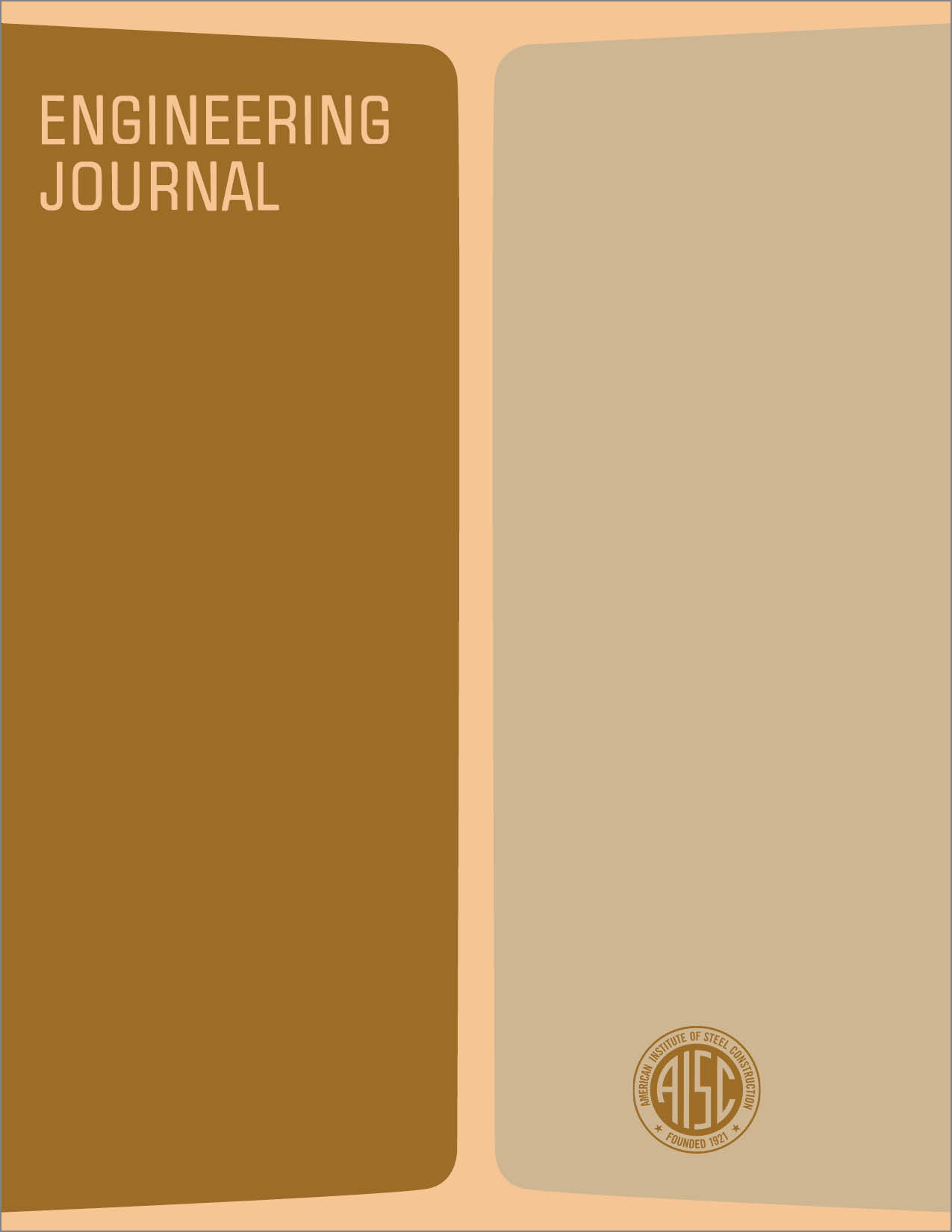Web Design Under Compressive Edge Loads
DOI:
https://doi.org/10.62913/engj.v20i4.401Abstract
Webs of rolled and built-up beams and girders can be subjected to local in-plane compressive patch loads. Examples are, wheel loads, loads from purlins and roller loads during construction. For practical and/or economic reasons, transverse stiffeners are to be minimized or avoided except at critical sections. It is, therefore, necessary to check the unstiffened web under the edge compressive loading to insure no localized failure will occur. They type of loading under consideration is shown in Fig. 1. The length of the loaded patch "c" can vary between being so small as to be assumed concentrated to so large it can be extended over the entire length of the web panel. The later case will be referred to as distributed-edge loading. The localized stresses due to edge loading can be combined with global stresses of bending and/or shear. During the past 50 years, tests have been performed by several investigators to study the web behavior under compressive edge loads. These loads are mostly of the type shown in Fig. 1. However, the compression of the web over a support bearing block, as in Fig. 2, was also investigated. Extensive analytical and experimental studies of the elastic buckling and ultimate strength of webs loaded, shown in Fig. 1, were carried out during the last 20 years. The purpose of this report is to summarize the available analytical and experimental studies and develop recommendations for the design of unstiffened webs under compressive edge loads.

